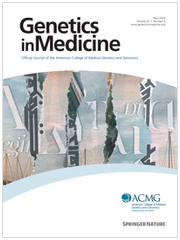 SMA is the second most common neuromuscular disorder in children. There are 4 types (from I to IV) depending on the age of onset of symptoms and the maximum functional abilities reached. SMA is the cause of paralysis, often progressing to respiratory failure and severe orthopedic deformities. The recent arrival of two innovative treatments based on antisense oligonucleotides (Spinraza®) or gene therapy (Zolgensma®) has rekindled interest in early detection of the disease, most often at birth.
SMA is the second most common neuromuscular disorder in children. There are 4 types (from I to IV) depending on the age of onset of symptoms and the maximum functional abilities reached. SMA is the cause of paralysis, often progressing to respiratory failure and severe orthopedic deformities. The recent arrival of two innovative treatments based on antisense oligonucleotides (Spinraza®) or gene therapy (Zolgensma®) has rekindled interest in early detection of the disease, most often at birth.
In an article published in May 2020, American researchers analyzed the results of the SMA neonatal screening program implemented in New York State (United States) since 2018 following federal recommendations. Over a year, 225,000 newborns were thus able to be tested and eight of them benefited from a presymptomatic diagnosis of SMA associated with 2 copies of the SMN2 gene for 3 of them, and 3 copies for 3 of between them. These six children were treated very quickly with either Spinraza® or Zolgensma®. It should be noted that one of the two children carrying at least four copies of SMN2 was still treated despite the wait-and-see and surveillance recommendations usually offered by experts. Finally, the authors point out that the incidence of SMA observed in real life (1 in 28,000 births) is much lower, about three times, than the commonly accepted theoretical figures.
